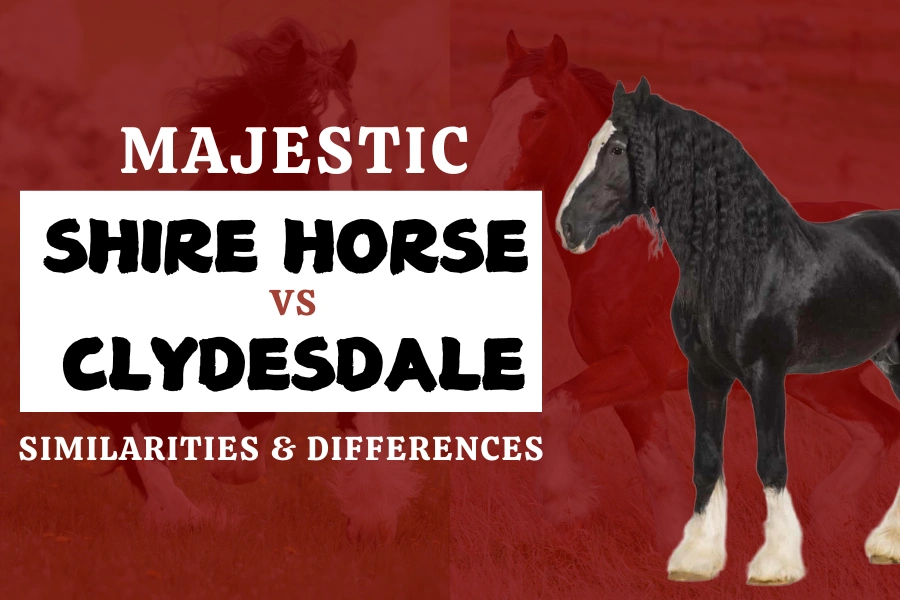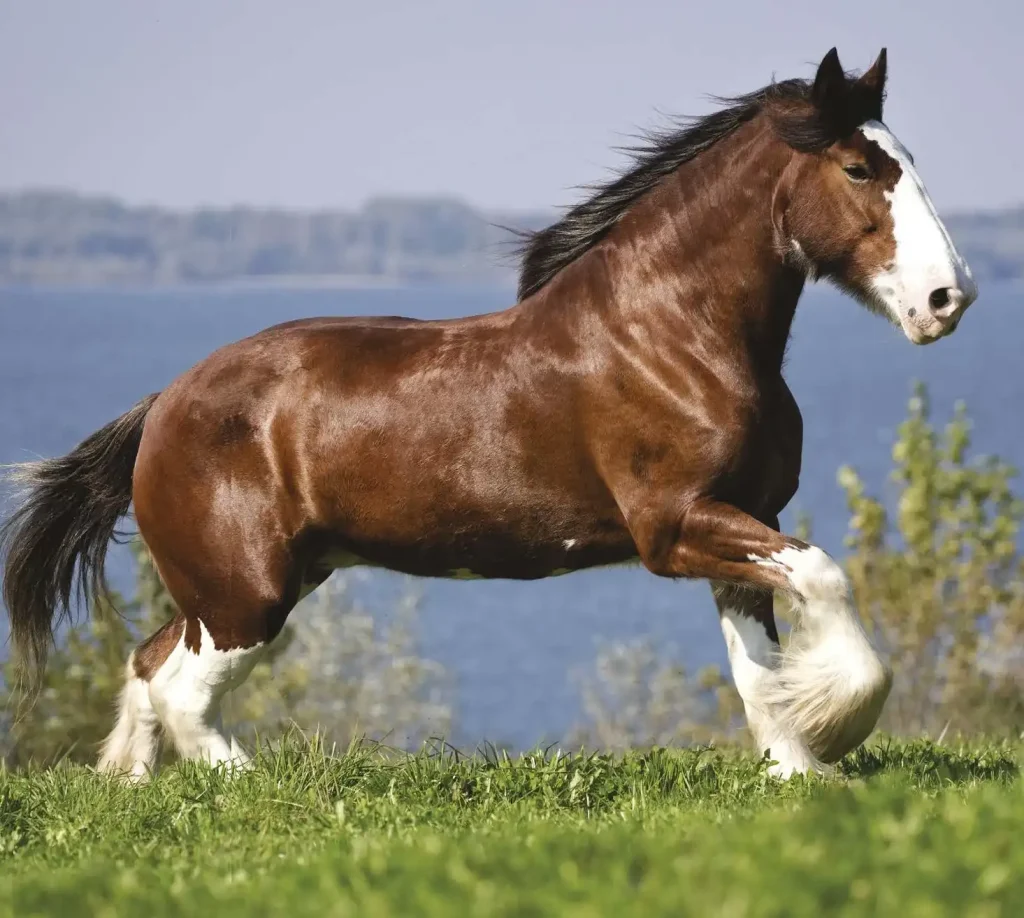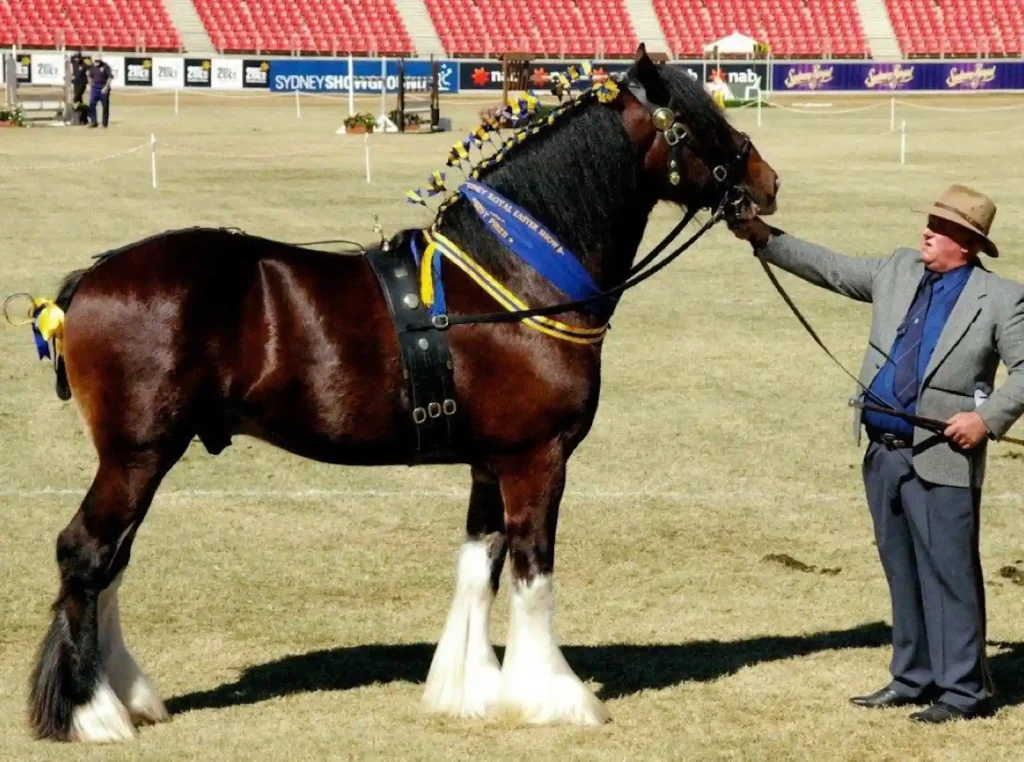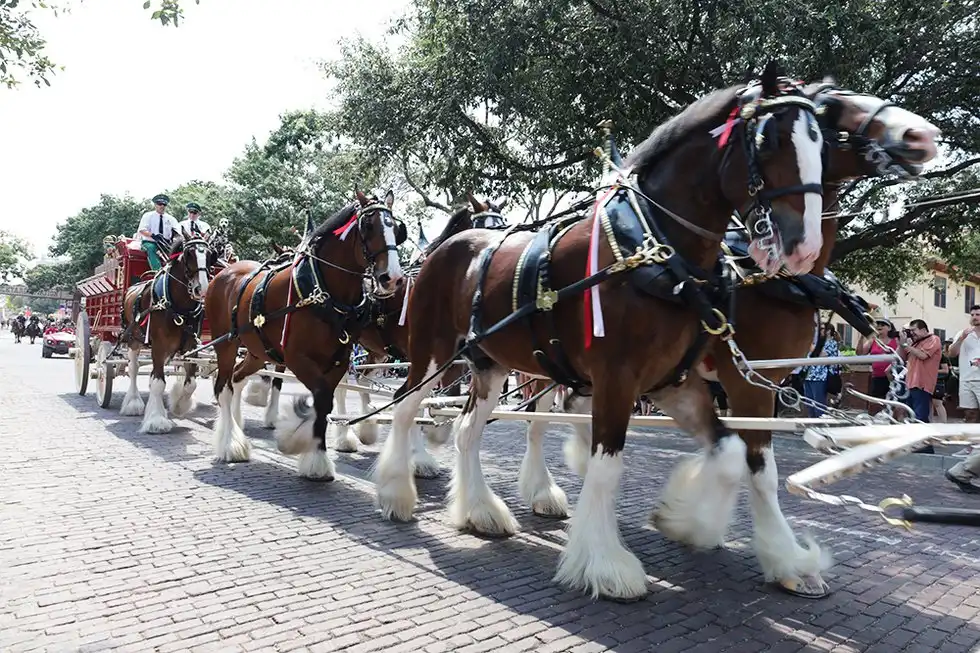Majestic Shire Horse Vs Clydesdale: Similarities & Differences

Shire Horse vs Clydesdale – they both stand out as two of the most famous and grand draft horse breeds worldwide. People recognize them for their huge size, power, and kind nature. These breeds have had a big impact on farming moving goods, and industry over time. Although they share some common things, Shires and Clydesdales each have some particular features.
In this article, we are going to discuss their history, appearance, life expectancy, and other factors when comparing Shire Horse vs Clydesdale. Once you finish reading this piece, you’ll know how to tell Shire horses from Clydesdales easily.
Understand About Draft Horses
Draft horses are gigantic in their measure and quality however exceptionally gentle. Breeding of such strong animals has been done for centuries to do intensive labor: agriculture, transportation, and industry. Originating from European breeds, Shire horse vs Clydesdale has a very long history dating back many years in terms of answering human needs.
Draft horses are large in size, muscular in build, and big-boned structurally. They stand tall between 16 and 19 hands high and weigh anywhere from 1,600 pounds to 2,400 or more. They have wide shoulders, deep chests, and strong limbs with feathering, while their hooves are quite large.
Shire Horse vs Clydesdale: A Full Comparison

Two of the best draft horse breeds that one would know are the Shire Horse vs Clydesdale. The owner appreciates them for their huge size and power. Many folks think they look alike. But if you watch them, you can tell them apart.
Origin & History
- Shire Horses: Shire Horses come from England and have roots going back to the Middle Ages. At first, people bred them to carry knights and their armor. Over time, they’ve had a role in farming moving goods, and even fighting wars.
- Clydesdales: The Clydesdale breed has its roots in 18th-century Scotland taking its name from the Clydesdale area. People bred them to handle heavy farm work and industrial jobs. Today, they’re famous worldwide for their roles in parades and ads.
Appearance
Shire Horse vs Clydesdale are both known for their big size and strong build. They have wide shoulders and legs with feathers. These horses look powerful but move with grace, and they often seem calm.
You can spot these horses by their large size and feathered legs. They have a look that’s both elegant and refined. People often notice their expressive heads and well-defined muscles.
Color Coat
- Shire Horses: Shires have black and bay coats, but you can also find them in brown, chestnut, or gray. Their coats often show white markings on the face and legs.
- Clydesdales: You usually see Clydesdales in bay coats with white markings on their body, confront, and legs. They’re known for the white feathers on their legs too. These horses also come in other colors like chestnut, roan, grey, or black.
Size
- Shire Horses: Shire Horses rank among the biggest and strongest horse breeds. They stand 17 to 19 hands tall (about 173 to 193 cm) and weigh up to 2,400 pounds (1,100kg) or more. The world’s largest horse was a Shire named Sampson. He set the record for the greatest horse in the 1850s. Sampson reached 21.25 hands (around 215 cm) in height and tipped the scales at 3,360 pounds (1,524 kg).
- Clydesdales: Clydesdales are a bit smaller than Shires but still very big reaching 16 to 18 hands in height (163 to 183 cm). They’re also lighter than Shires. Their weight ranges from 1,800 to 2,200 pounds (800 to 1000 kg).
Temperament

Shire horse vs Clydesdale – they have a reputation for their calm and gentle nature. This makes them easy to train and handle. Their easygoing temperament turns them into great working partners and companions. These horses are friendly, patient, and dependable, which adds to their popularity in different roles, including therapy work.
Life Expectancy
Shire Horses live for 25 to 30 years, while Clydesdales tend to have a shorter life span. They can live around 20 to 25 years only. However, there is always an exception. Some Clydesdales can live up to 30 years with good care.
Uses
As we said before, people use both types of these horses (Shire Horse vs Clydesdale) to do heavy work on farms, pull logs, and fight in wars. These days, you can see them in riding activities, ceremonies, parades, and special events.
- Clydesdales: You’ll often find beautiful Clydesdales doing such jobs as pulling carriages, parading gracefully, or competing in driving contests. Their striking appearance and eager-to-please demeanor make them stars in the show ring and beyond. Clydesdales are also very valuable in equine therapy programs, as they can bond with people.
- Shires: With a great deal of strength, the shires, in fact, represent the powerhouse workers in England. They are the draught for anyone requiring serious muscle. Shires also show their qualities and durabilities in the show ring, particularly in driving and horse pulling. They may be a little more laid back and not as showy as the Clydesdales, but there is nothing that diminishes their presence or capabilities.
Prices
It can cost you from $2,000 to $30,000 for Shires, and around $4,000 to $50,000 for Clydesdales. The prices will vary based on their family background, what training they have, their age as well as unique characteristics (such as rare color or special markings on the body)
FAQs – Shire Horse vs Clydesdale

Compared to other regular horse breeds, Shire and Clydesdale horses are significantly bigger and more muscular. There are many different sizes of horse breeds, but most are considerably smaller and not nearly as powerful. Let’s take Thoroughbreds as an example. They weigh only 1,000–1,200 pounds and have a height of 15–17 hands.
Speaking to their appearance, Shire and Clydesdale breeds, with their feathered legs and muscular body, stand out. Shires look strong and imposing; Clydesdales look more graceful and refined. The regular breed has so many shapes and sizes without the leg feathers and heavy muscling that you see in draft breeds; they have lighter bodies, more nimble, for a myriad of activities.
As said over, Shire and Clydesdale steeds are celebrated for their mind-blowing quality as well as their massive look. But there are some other robust breeds as well. Belgians and Brabants from Belgium, Percherons from France, and Suffolk Punch from Britain are some popular names you may have heard.
Final Thoughts
Shire Horse Vs Clydesdale – you’ve discovered a full comparison between them. The Shire and Clydesdale horses are both symbols in the horse world, each in their own way, for both strength and elegance. Perhaps one’s feelings are more toward the Shire in its massive muscularity or toward the Clydesdale in its gentle giant nature. Both breeds come with an unmistakable combination of energy, grace, and intelligence.



